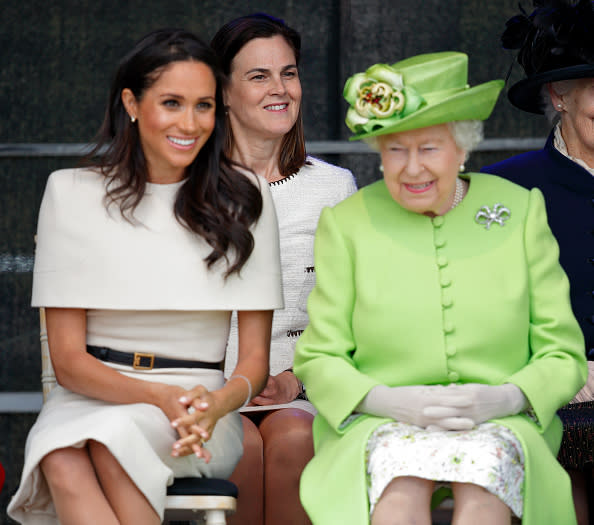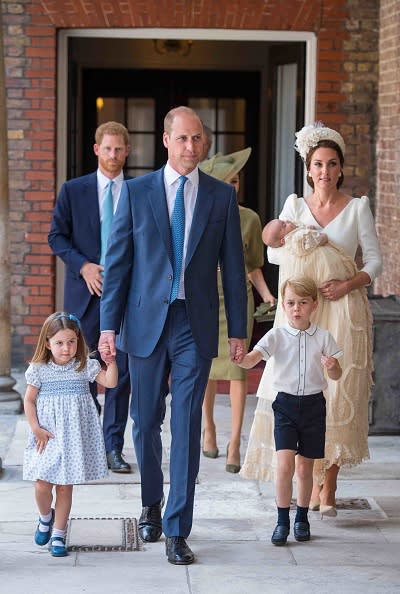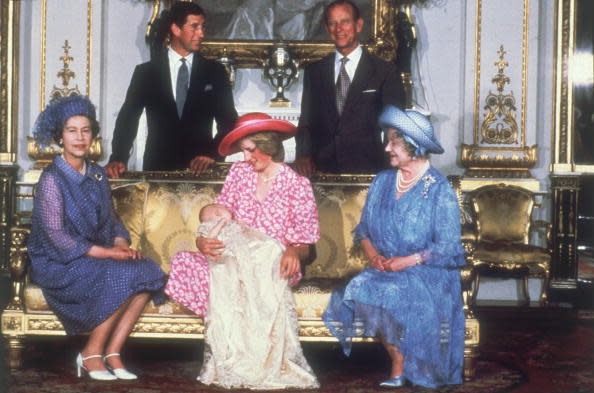Meghan Markle and Prince Harry will have to follow these weird royal baby traditions
The birth of Prince Harry and Meghan Markle’s first child is almost here, and royal baby frenzy has reached a fever pitch around the globe.
While Harry and Meghan have gained a reputation for their attempts to buck royal tradition, there are still some non-negotiables that will come with their baby’s entry into the world’s most famous family.
Want daily pop culture news delivered to your inbox? Sign up here for Yahoo’s newsletter.
Battle of the sexes
Although the couple continually promote a campaign of gender equality, their child will inevitably be treated differently depending on whether it’s a boy or girl.
If they have a son, he is expected to be given the title Earl of Dumbarton, Prince Harry’s secondary Scottish title.
A baby boy will also one day become the next Duke of Sussex, a privilege which cannot be passed on to any of the couple’s daughters.
If Baby Sussex if a girl, she is expected to be styled as Lady (her first name) Mountbatten-Windsor.
However, if and when Prince Charles becomes king, all of the Sussex children will be entitled to become a prince or princess, as they will be male-line grandchildren of the monarch.

Alerting the queen
As head of the royal family — and the Commonwealth, which Harry and Meghan represent through their work — the queen will be the first to know of the royal baby’s arrival.
The top-secret information will be communicated on an encrypted phone in a call expected to be made by Prince Harry.
After the queen is informed, the royal couple’s staff will then tell other high-profile individuals, such as the prime minister — and, of course, their own excited families.
What’s in a name?
For any royal baby, their birth means much of their life will already be mapped out — beginning with a decidedly traditional name.
While there’s no hard-and-fast rules when it comes to naming a royal baby — let’s not forget Princess Anne’s daughter being named Zara — the family tends to stick to naming their offspring after notable ancestors.

Prince George was named after both the queen’s father and grandfather, Princess Charlotte was named after Prince Charles and little Prince Louis’s moniker is said to be a nod to Lord Louis Mountbatten, who acted as a father figure to both Prince Philip and his eldest son.
In fact, Harry’s own birth name, Henry, dates back to the days of the infamous King Henry VII and his equally interesting predecessors.
A royal announcement
Not much in Baby Sussex’s life will be low-key, including how his or her arrival is announced to countless eager well-wishers across the globe.
In addition to a thoroughly modern announcement on social media, an easel is expected to be placed outside Buckingham Palace informing the public of the birth.
Following this, royal troops will traditionally engage in a gun salute and Union Jacks are expected to fly across government buildings across the city.
Baby’s first gown
When it’s time for Baby Sussex to be baptized into the Church of England, he or she will wear a christening robe that is an exact replica of one that has been used by the royals since 1841.

The original was commissioned for Queen Victoria’s eldest daughter, Vicky, in 1841 and was worn by 62 royal babies including the queen, Prince Charles, Prince William and Prince Harry.
But in a bid to preserve its splendor, the replica was needed and the queen’s youngest grandson, James, Viscount Severn was the first to wear this version in 2008.
One strange rule is no more
Meghan will be counting her lucky stars the royal family got rid of one very unusual childbirth rule.
In years gone by, female members of the royal family were put through a very different process when giving birth, which included the presence of two people you probably wouldn’t want in the room.
In the past, the Home Secretary at the time would need to be at the birth. It was widely assumed that this was to ensure that no baby would be replaced with one not of royal birth, but there’s little evidence to support that.
Thankfully, they put an end to that practice just before Queen Elizabeth gave birth to Prince Charles in 1948, and the last royal to be born in the presence of the Home Secretary was the queen’s cousin, Princess Alexandra.
Oddly, the Archbishop of Canterbury used to also attend the birth of the royal babies, but now the person who holds that position simply christens the baby instead.
Read more from Yahoo Lifestyle:
Follow us on Instagram, Facebook and Twitter for nonstop inspiration delivered fresh to your feed, every day.